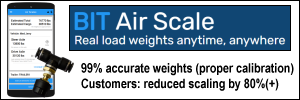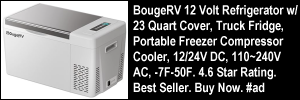The one night each year that Mike Simons doesn’t want to drive a big truck is New Years Eve (December 31 going into January 1).
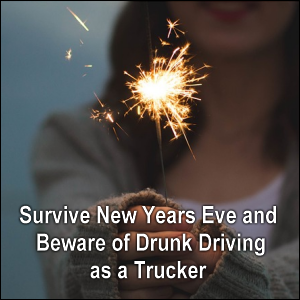 The reason for this is because of the potential for people who have been partying to have consumed too much alcohol and therefore engaging in drunk driving.
The reason for this is because of the potential for people who have been partying to have consumed too much alcohol and therefore engaging in drunk driving.
He’s not the only one, as the CBS News affiliate in Atlanta reported: “It’s one of the deadliest nights of the year for drivers.”(1)
Of course, driving under the influence — whether from alcohol, drugs or something else — can happen any time of the year, not just New Years Eve.
We specifically remember these two cases when we were team driving.
- The first incident happened in the 1990s before cell phones were as common as they are today. Late one night when we were traveling south on I-85 toward Charlotte, North Carolina, we noticed that the driver of a car who was also heading south was weaving all over the road.Vicki exclaimed to Mike, “Yikes, honey, did you see that? He just barely missed that concrete barricade?!”We attempted to get the attention of law enforcement on Channels 9 and 19 on the CB radio. We couldn’t even locate another truck driver with a cell phone who could relay the information via 911 to law enforcement.We ended up pulling into the rest area near Concord and reporting the driver from a pay telephone. We were so shaken by the experience that we decided to get a cell phone with nationwide coverage.
- The second incident happened early in the morning southeast of Louisville, Kentucky. Vicki was driving our company truck and Mike was in the bunk sound asleep. She came up on a car whose driver was weaving badly in the right hand lane.It was kind of late for someone who had been drinking the night before to still be out, but then again people who drink and drive don’t necessarily confine their drinking to “happy hour.”To keep the driver in front of her, Vicki just slowed down (which was really saying something since back in those days, the fastest a truck for Swift went was 57 mph). She rationalized that it was better to watch him in front of her than have him behind her. Eventually, he exited and Vicki was able to resume her normal speed.
These two incidents point out that driving under the influence is not confined to New Years Eve.
Holidays and Alcohol
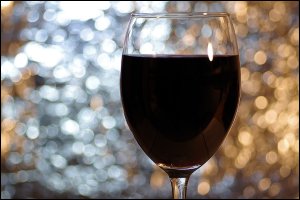 In 2009, Forbes published a list of the “Most Dangerous U.S. Holidays“, at which point, New Year’s Eve was 6th on the list.
In 2009, Forbes published a list of the “Most Dangerous U.S. Holidays“, at which point, New Year’s Eve was 6th on the list.
Accidents and collisions can take place at all hours of the day and night and not necessarily due to alcohol.
However, on December 28, 2016, the Insurance Institute for Highway Safety (IIHS) wrote,
“Jan. 1 is the deadliest day on average for alcohol-related crashes involving a motor vehicle, pedestrian or bicyclist, a new Insurance Institute for Highway Safety analysis shows.”(2)
Whether it is New Years Eve or not it would do us well to know or review the following.
Signs of Drunk Driving
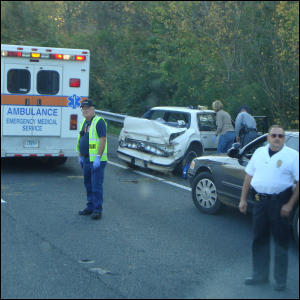 We are listing here in categories of our choosing the signs or indications that someone is driving drunk.
We are listing here in categories of our choosing the signs or indications that someone is driving drunk.
- Speed
- Speeds over 10 mph above posted speed limit
- Drives too slowly
- Operates vehicle with varying speed
- Accelerates or slows down quickly
- Braking and Stopping
- Brakes excessively
- Slows or stops inappropriately (including stopping abruptly, setting up the potential for a rear-end collision for someone who is following)
- Stops questionably in traffic lanes
- Stops too far ahead (perhaps being part-way in an intersection before completely stopping)
- Stops too short (not being close enough to traffic signals)
- Lane control
- Weaves within or between lanes
- Drives over the center line
- Straddles lines between lanes
- Drifts out of lanes
- Swerves (as if seeing something or suddenly becoming alert)
- Drives off road (even off the shoulder)
- Drives against the flow of traffic (such as on the wrong side of the road, the wrong way on a one-way-only street or “on” an off-ramp)
- Following distance
- Nearly misses or hits any object, moving or stationary
- Tailgates
- Turns and Curves
- Fails to negotiate curves well
- Negotiates turns widely
- Makes illegal or unwarranted turns
- Appearance and Reactions
- Appears to be drunk
- Uses questionable signals
- Has delayed reaction to traffic signals
- Drives without having vehicle’s headlights on
- Drives with windows down in cold weather
- Waves a fist out the window (as if upset with other drivers for their driving)
- Operations
- Passes dangerously
- Operates vehicle in jerky movement (such as inability to shift smoothly)
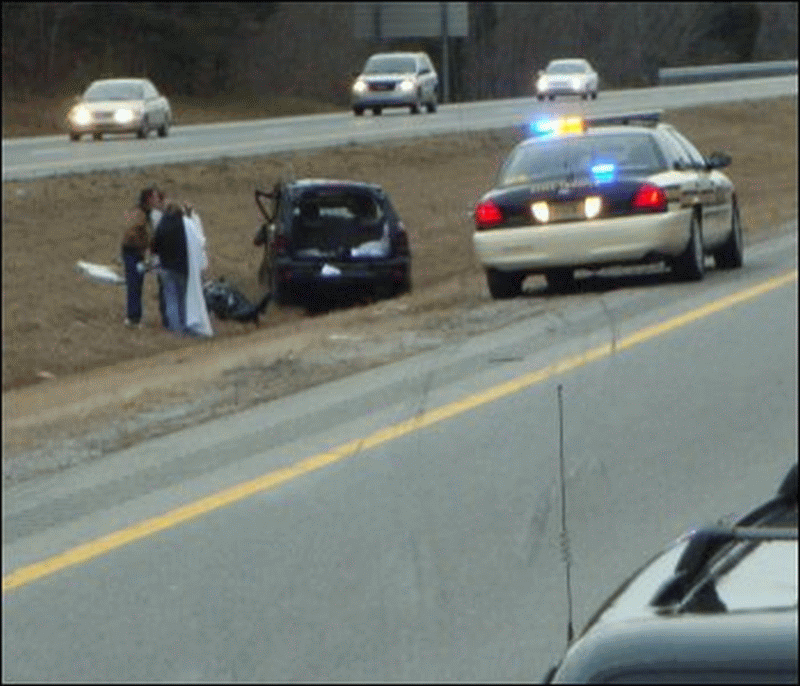 Do you see the marks on the road in this photo?
Do you see the marks on the road in this photo?
This may or may not have been a drunk driving incident but it is obvious that the vehicle is somewhere other than where the driver intended.
Incidentally, this photo was taken on December 30, 2009, one day before New Years Eve.
Whether it happens on New Years Eve or not…
If You Encounter a Suspected Drunk Driver
- Stay behind him/her and do not follow too closely;
- If you can do so without getting too close, notice the make, model and color of his/her vehicle, as well as the state and number on the license tag or plate;
- Do not try to pass (as he/she could move into your lane and hit your truck);
- Do not attempt to impede him/her or other drivers on the road (using the size of your truck as a restraint), but rather leave that to law enforcement;
- When it is legal to do so (bearing in mind laws against drivers using hand-held cell phones), report the driver by calling 911 or the state police designated for the state you’re in (cell phone highway assistance numbers); and
- Operate your vehicle like the professional you are, obeying the speed limit and other laws.
 Some drivers who are involved in drunk driving walk away from the wrecks.
Some drivers who are involved in drunk driving walk away from the wrecks.
Others are carried off in ambulances or body bags.
Special Warning for Professional Truck Drivers
You are probably aware that professional truck drivers are under more scrutiny than the general motoring public.
Some drivers of four-wheeled vehicles don’t like truckers.
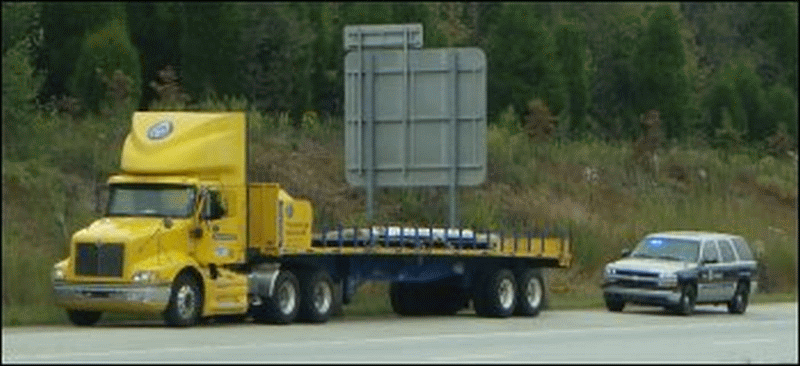 They can call law enforcement to report what they consider to be an impaired trucker driving even though the professional driver is not impaired. CDL holders can undergo random drug tests at any time. So be prepared.
They can call law enforcement to report what they consider to be an impaired trucker driving even though the professional driver is not impaired. CDL holders can undergo random drug tests at any time. So be prepared.
If you’re involved in a collision while driving a commercial motor vehicle — whether or not you’re at fault and whether or not it is New Years Eve — more than likely you will be required to take a post-accident Breathalyzer test or undergo a urinalysis test or both.
If you “blow” anything other than a “0”, you may be found at fault and you may lose your job as a truck driver.
Other ramifications could result in loss or suspension of your CDL, rendering you jobless.
Many groups of law enforcement officers step up patrol of roads during the holidays (including New Years Eve) because of the potential for drinking and driving.
It goes without saying that you should never ever drink alcohol and drive a commercial motor vehicle.\
Still, some truck drivers persist in doing it, as one article from the Chicago area reported — after the crash.(3)
The practice isn’t limited to the United States either, as another article from India reported. Not only did these drivers drink, but they got drunk in the process!
You cannot control the actions of others but you can control your own. Make sure you are not impaired when you drive. And watch out for other drivers who are impaired.
![]() Money saving tip: Know the times of the year that are most likely for people to drink and drive (including but not limited to New Years Eve).
Money saving tip: Know the times of the year that are most likely for people to drink and drive (including but not limited to New Years Eve).
If possible, limit your professional driving on those dates.
The way Mike has done this on New Years Eve holidays in the past is to park his truck
- in the late afternoon hours (before the sun goes down)
- in a secure location and
- not resume driving again until the next morning.
You may wish to follow his example.
Review the potential actions taken by those who are intoxicated — or driving under the influence — so that you can avoid being involved in an accident.
Never operate your commercial motor vehicle while or immediately after drinking alcohol.
If you feel that you must drink alcohol and travel, either arrange for a non-drinking friend (a designated driver) or a taxi to take you where you need to go.
Remember that your CDL is your ticket to your future in commercial driving and that you need to protect it.
Return from Survive New Years Eve and Beware of Drunk Driving as a Trucker to our Truck Operations page or our Truck Drivers Money Saving Tips home page.
References
1. www.cbsatlanta.com/news/26325240/detail.html (no longer online)
2. www.iihs.org/iihs/news/desktopnews/new-years-day-is-deadliest-for-alcohol-related-crashes (no longer online)
3. www.myfoxchicago.com/dpp/news/metro/jose-herrera-drunk-trucker-crashes-i65-20100607 (no longer online)

